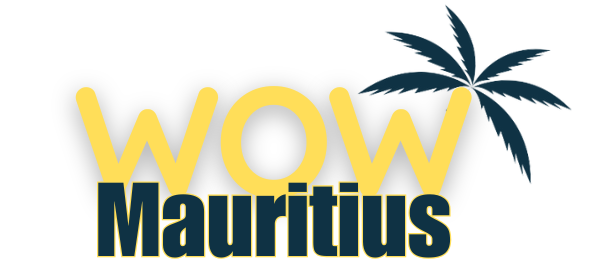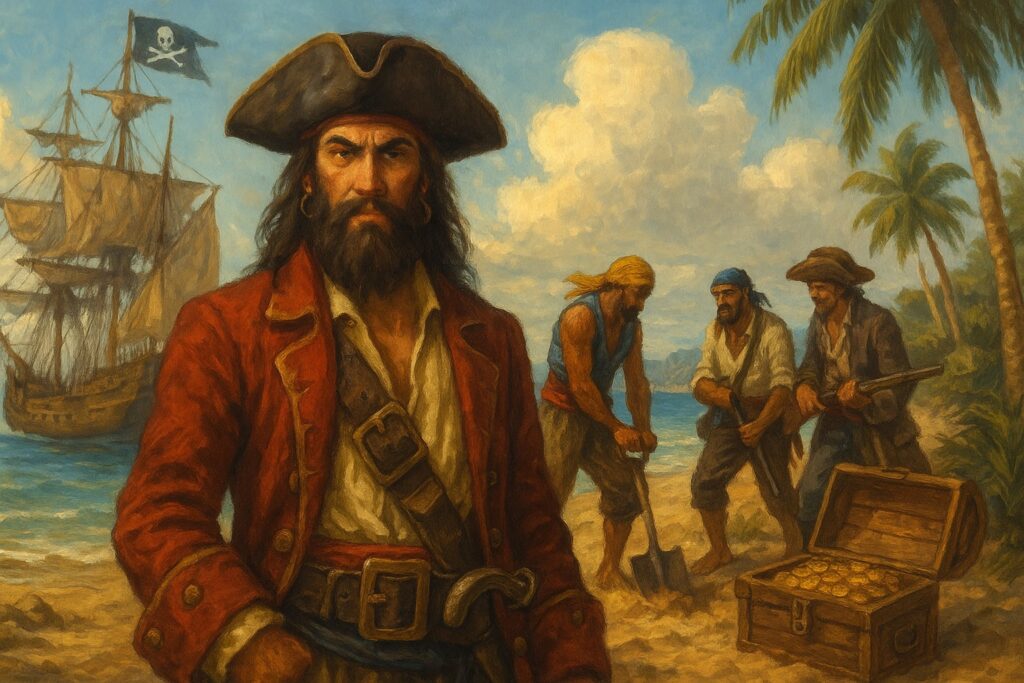There’s something about early morning in Mauritius, before the hotels hum with life, that feels downright ancient. Maybe it’s the wind whistling in from the open sea or the mist clinging to the volcanic hills—maybe it’s just imagination—but sometimes, if you squint into the rising sun, you half-expect to see a battered old ship on the horizon, sails patched, black flag fluttering, slipping silently into a forgotten cove.
Pirates. The word itself tastes of salt and danger. Long before “all-inclusive” meant a beachfront buffet, this island was a speck of mystery at the edge of the world map—a secret whispered by sailors, a promised land for those running from the law or chasing impossible dreams. In Mauritius, the legends of pirates and lost treasure don’t just haunt dusty books; they’re woven into the coastline, tangled in the sugar cane, alive in the stories you’ll hear if you linger over a rum with the right local.
This is not just a tale of gold and gunpowder. It’s the story of how pirates—real, clever, desperate, and sometimes oddly democratic—shaped the very soul of the southwest Indian Ocean. To know their world is to discover a Mauritius most visitors never see, a place where every bay hides a secret and every wave carries a memory.
Where the Pirate Road Led: From the Caribbean to the Mascarene Islands
It’s hard to picture now, but in the late 1600s, the Indian Ocean was one of the wildest frontiers on earth. Trade ships groaned with spices and silk, the navies of Europe jostled for dominance, and the world’s outcasts—ex-navy men, escaped slaves, even a few women in disguise—came seeking fortune and freedom. Pirates, in other words.
After the Caribbean became too hot, crews began slipping east. Madagascar, the Seychelles, Réunion (then Île Bourbon), Rodrigues, and Mauritius formed a ragged chain of hideouts, watering holes, and makeshift colonies. For a generation, these islands were a crossroads for the bold and the desperate—a place where a lucky raid might buy a new life, or a sudden storm might mean the end.
The Pirate’s Life: Law, Chaos, and the Democratic Deck
Forget every cartoon you’ve ever seen. The real pirates of the Indian Ocean were a rough, unpredictable lot, but their ships were governed by surprisingly strict rules. Captains were elected. Loot was split by written agreement, and even the meanest deckhand got a share. There were penalties for theft, codes for injury pay, and fierce debates over what to do next.
Mutiny was never far off. A captain who lost the crew’s respect could be out in a heartbeat, abandoned on a sandbar or simply voted off the ship. Yet this rough democracy, born of necessity, gave many a second chance: a man from nowhere could rise by skill or charisma, not birth.
It wasn’t all brotherhood and rum, of course. Life was short and dangerous. The next ship might be a fat merchantman or a heavily armed trap. Disease, hunger, cyclones, and betrayal were daily realities. Yet something about this floating, shifting world drew people in—the sense that, at least for a while, you could make your own luck.
The Cast: Rogues, Rebels, and Reluctant Heroes
The Indian Ocean has its own pantheon of pirate legends, names that send a shiver through old sea charts and campfire stories:
- Henry Every (“Long Ben”): The most successful pirate you’ve never heard of, Every helped orchestrate the heist of the Ganj-i-Sawai, vanishing with millions in Mughal gold—and disappearing forever into myth.
- Olivier Le Vasseur (“La Buse”): A Frenchman famed as much for his code of riddles as for his raids. His hidden treasure remains one of the great unsolved mysteries of the Indian Ocean.
- John Bowen, Thomas White, Edward England, Thomas Tew: Their stories are a wild mix of triumph, disaster, and sudden reinvention. Bowen, for example, shipwrecked off Mauritius in 1702, later settled on the island with his crew, living out his days not as a pirate, but as a local of sorts.
Some pirates tried to “go straight”—marrying into local families, farming, or trading. Others died on the gallows, or simply disappeared, leaving only whispers behind.
Mauritius: A Pirate Haven at the World’s Edge
Mauritius was never the most fortified of outposts. With its rocky inlets, hidden coves, and winding rivers, the island was both a shield and a temptation. French, Dutch, and English powers came and went, but for much of the 17th and 18th centuries, this was a place where pirates could hide, refit, or simply vanish for a while.
The southeast coast—Mahébourg, Grand Port, the inlets near Île aux Cerfs—were favored landfalls. Crews would haul their battered sloops ashore, trade what they’d stolen for fresh water and fruit, and listen to the pulse of the jungle, wondering what came next. Sometimes they made uneasy peace with settlers. Other times, they found only trouble.
There are stories—half-history, half-dream—of pirate captains settling down here, raising families, even planting cane. There are darker tales, too: betrayals, buried chests that cursed their finders, gold lost forever when a hurricane swept through.
Yet something about Mauritius drew the lost and the daring, the ones with nowhere else to go.
The Raids: Daring, Luck, and Ruthlessness
If you ever wander the old streets of Mahébourg or listen to the fishermen in Grand Gaube, you’ll hear echoes of raids that shook empires. The most infamous? The seizure of the Mughal ship Ganj-i-Sawai, a floating palace bristling with jewels and gold, taken by Henry Every and his crew. The loot, some said, was so vast that each pirate walked away a rich man—at least, until the world’s rulers put a price on their heads.
The Indian Ocean saw a constant chess game: pirates striking fast, then vanishing; colonial governors sending out expeditions that rarely caught more than rumors. Merchant ships sailed armed, their crews scanning every horizon for sails—friend or foe.
The weather was as much an enemy as any navy. More than one pirate sloop foundered on the reefs of Mauritius or vanished in the teeth of a cyclone. John Bowen’s Speaker was smashed to matchwood, forcing the survivors to find new lives (or new crimes) ashore.
The Last Refuge: Pirates Become Locals
Time, as always, changes everything. By the 1730s, the golden age of piracy was fading. European navies grew stronger, treaties closed off old hiding places, and the Indian Ocean became less forgiving to outlaws.
Some pirates took amnesties. Others slipped away, assumed new identities, or merged with island life. The descendants of those crews may still walk the streets of Port Louis and Mahébourg, their family names echoing strange places far away. Ask the right person in a village bar, and you might hear a story of a great-great-grandfather who once sailed under the black flag.
Others left less tangible traces: a coin found after a storm, a battered pistol in the roots of a banyan, a name carved into stone, half-erased by centuries of wind and rain.
Treasure: Myths, Maps, and Moonlit Hunts
Mauritius and her sister islands have always been a magnet for treasure hunters. The greatest lure of all? The lost fortune of Olivier Le Vasseur—La Buse—supposedly hidden somewhere between Mahébourg and the reefs off Grand River South East. Le Vasseur left a cryptic note, a tangle of symbols and riddles that has tormented dreamers ever since.
There are stories of other chests: gold coins found by fishermen, a jeweled cross unearthed on Rodrigues, silver goblets glimpsed in a cave at low tide. The truth? Most finds vanish as quickly as they appear. Sometimes the legend is worth more than the loot itself.
But if you ever feel tempted, walk the sands at dawn, when the world is quiet. Listen to the wind and the gulls. Maybe, just maybe, you’ll catch the ghost of a song, a map traced in foam.
Flags, Code, and the Pirate Democracy
The black flag—Jolly Roger—was more than a threat. It was a promise: “We take what we want, but we do it on our terms.” Pirate flags in the Indian Ocean came in many forms: black with white skulls, sometimes red for “no quarter,” each designed to strike instant fear.
Aboard ship, rules were everything. Articles were posted, loot was split according to wounds and rank, and even the captain could be replaced by a vote. There was a strange sense of justice—brutal but egalitarian—that set pirates apart from the world they plundered.
That spirit, oddly enough, survives. In the way Mauritians cherish independence, in the warmth and resilience of the island’s communities, you can feel something of that old refusal to bow down.
Pirates and Place: Where Their Shadows Still Linger
If you travel along the coast, you’ll find the footprints of pirates hidden in plain sight. Some are in the names: Anse Lesage, Grand’Anse, Île aux Cerfs, Île de la Passe. Others are in local legends—tales of caves that swallow the unwary, of fishermen who find coins after a storm, of trees that “won’t grow straight” because of what lies beneath.
Walk through the old sugar estates, and you may hear stories of ghosts or of a “curse” that lingers from the pirate age. In Mahébourg’s museum, a single gold coin or battered pistol can conjure an entire era.
The truth is, every stone, every path, might hold a secret. Mauritius is that kind of place: it rewards those who look a little deeper, who listen a little longer.
A Human Story: Blood, Hope, and Second Chances
It’s easy to glamorize pirates—paint them as wild heroes with hidden hearts of gold. The reality was harsher: life was brief, often brutal, and very few got the fairy-tale ending. Yet in their lawlessness, pirates forged something rare—a chance for the poor, the outcast, and the runaway to make their own rules.
In that way, their story is Mauritius’ story too. An island built by wanderers, dreamers, and those seeking a new beginning.
Your Own Pirate Quest: Mauritius for the Adventurous
If all this has you itching to follow in the pirates’ footsteps, you’re in luck. Some of the best “pirate” experiences are hiding in plain sight.
- Mahébourg: Wander the market, visit the National History Museum, and look out over the bay where pirates once anchored. The stories are everywhere—if you listen.
- Île aux Cerfs: Take a boat trip from Trou d’Eau Douce. Imagine approaching the island not as a tourist, but as a lookout, scanning the reefs for enemy sails.
- Grand River South East: Explore the inlets and waterfalls. Some say Le Vasseur’s treasure is hidden here, deep in the mangroves or beneath a fallen tree.
- Rodrigues and the outer islets: Fewer crowds, more mystery. Every headland could be a treasure map; every beach might hide an old coin.
- Port Louis: Though modern now, its harbor once teemed with strangers, some legitimate, some looking to disappear.
For the full effect, hire a local guide—many are born storytellers, and you’ll hear things no brochure ever mentions.
Folklore, Festivals, and the Pirate Spirit Today
Mauritius hasn’t forgotten her pirates. Festivals sometimes echo their tales, and local musicians spin new songs from old legends. The pirate’s refusal to be tamed has become part of the island’s mythos: rebellious, welcoming, impossible to pin down.
Even in daily life, traces survive: the laid-back resilience of fishermen, the fierce independence of the rural south, the storytelling culture that turns every stranger into a friend by sundown. The pirate age might be gone, but its spirit—adventurous, wild, hopeful—still shapes Mauritius in subtle ways.
Why We Still Search: The Timeless Pull of Pirate Myths
Why do these stories endure? Maybe it’s because pirates embodied the dream of escape, of starting over, of finding a fortune just over the horizon. Or maybe, deep down, we all long to write our own rules—even if just for a moment, on a wind-tossed island in the middle of the sea.
For Mauritius, the age of pirates is more than history. It’s a reminder that the unknown still calls, that magic and risk and reinvention are part of the island’s DNA. Every lost ship, every whispered legend, adds another layer to the story.
Raising a Glass to the Pirate’s Legacy
Next time you find yourself by the water at dusk, with the sky turning gold and the surf whispering of old secrets, raise a glass to the pirates of Mauritius—flesh and blood, dream and myth. They were not all heroes, but they lived large, dared greatly, and left behind a world more mysterious, more open, and more alive.
So whether you come for the beaches, the rum, or just the stories, know this: the pirate’s spirit is still here. It’s in the laughter of children on the sand, in the wild storms that sweep the coast, in the endless blue that tempts every wanderer. On Mauritius, the adventure never truly ends.



